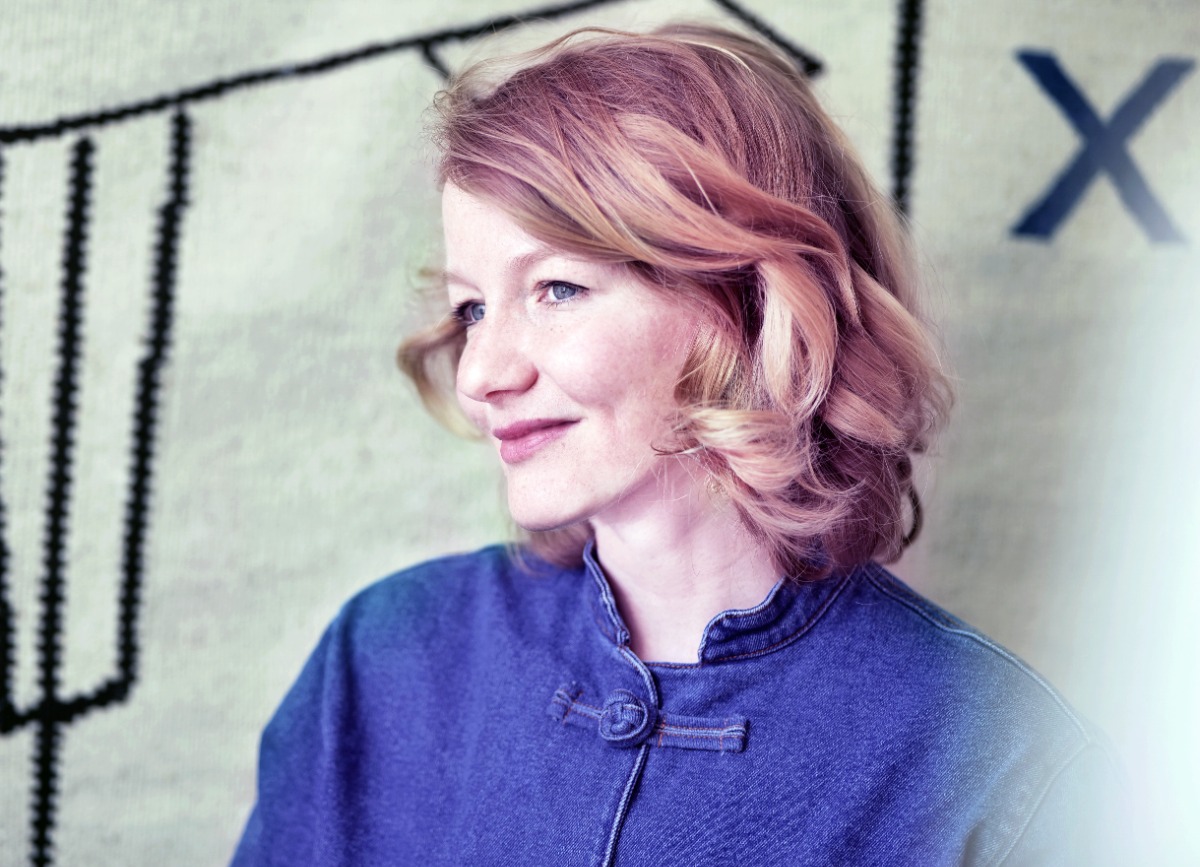
Reexamining Artefacts
An interview with artist Ola Vasiljeva
In the center of the exhibition Artifacts of the Present (on view until August 20) are four artists of our day: Ola Vasiljeva, Kristaps Ancans, Augustas Serapinas and Lina Lapelyte. Through creating a dialogue with space, its history and its imagined future, they are rethinking our place in the world’s territorial and historical context.
Vasiļjeva’s installation Rosme brings to life stories from the times of the former Training Center and Factory of the Cēsis Society for the Blind (1952–1999). She meticulously conducted a historical and emotional revision of the building to create a scenography of past events that extends beyond mere work processes. An active social life flourished here, one with self-created utopias: regular flower and handicraft exhibitions, self-expressing art collectives, sporting events, and a lively theater troupe. Vasiljeva positions the theater as the starting point of the installation, with the props that were left behind appearing as if frozen during a long intermission. Among the numerous artifacts in the exhibition that organically blend into the space, both newly created and found objects have been combined. The returns at the boat construction yard have become glasses, while a kiosk built from recycled material has provided the opportunity for a renewed presence in society. As in a theater, Vasiļjeva has also created a stage, but one that is autonomous – it does not beg to be filled and is instead content to just “be” in the silent presence of memories.
Ola Vasiljeva is a Latvian artist; born in Ventspils, her studies took her to the Netherlands, where she obtained a bachelor’s degree from the Utrecht School of the Arts and resided at the Rijksakademie in Amsterdam. Vasiļjeva’s solo exhibitions have taken place in galleries and art institutions such as Art in General (New York), BOZAR (Brussels), Passerelle Contemporary Art Center (Brest), Munich Kunstverein, Graz Kunstverein, Kaiser Wilhelm Museum (Krefeld), de Appel (Amsterdam), Vleeshal (Middelburg), Indipendenza Roma, kim? Contemporary Art Center (Riga), and elsewhere. In 2013 Vasiļjeva was a finalist for the Prix de Rome, and in 2021 she was shortlisted for the Purvītis Prize. Consequently, this exhibition in Cēsis offers a rare opportunity to encounter the artist’s work in Latvia.
In the exhibition “Artifacts of the Present”, you reference and build around events and stories from the former Training Center and Factory of the Cēsis Society for the Blind (1952–1999). Could you elaborate on how you decided to take this angle?
I am naturally drawn to spaces and locations which hold a memory; some have a very strong spirit still present, and I am interested in engaging with that. My work in general deals with the memory of spaces, and as such relates greatly to the surroundings – location, area and the building itself play a very significant role in my installation process. As a consequence of that, most of my work usually develops on site, connecting and drawing directly from the history of the space. Even before setting up, I always do site visits and feel the space and the area, which then informs the production and/or collecting process.
When I received the invitation to participate in this exhibition, the history of the building fascinated me. It was clear from the start that I would engage with its story, as it seemed impossible not to. While preparing for the first site visit, I found a recording of an older TV program in which Irēna Lāce – the head librarian of the Cēsis Library for the Blind, and a former factory worker herself – spoke about the factory as well as gave an overview of the Cēsis Training Center and Factory Museum, the latter of which still exists in the basement hallway that connects the two buildings of the former factory.
I reached out to Irēna and explained my approach to preparing the exhibition. At our first meeting in the library, she showed me the collection of large photo albums which contained mainly photos and other paraphernalia going back to the early years of the factory. The albums were numbered and preciously preserved.
Photo: Ansis Starks
The sentiment of Rosme was very much inspired by the atmosphere I experienced at the museum in the basement of the main building. The museum is basically a large, long showcase on the wall containing objects manufactured at the factory as well as photos, thank-you notes, and medals. The lights weren’t functioning during my first visit, so I had to view the contents of the showcase with the help of a flashlight. What struck me back then was that the majority of the photo documentation focused on the rich social life that was had at the factory. There were flower exhibitions by the members of the community, craft presentations, music performances, and a lot of theater: there were libretto’s for plays like G. Priede’s “Aivaru Gaidot (Waiting for Aivars)” and invitations with quotes by Rousseau. This archive material not only illustrated the intense cultural activity of the community but also gave clues as to how significant the factory was for its workers.
People with impaired vision from all over Latvia would be given the possibility to work at one of these training factories. There was often a living block near the factory where the workers had apartments and an adapted infrastructure. The “Blind Quarter” is still there in Cēsis, right next to the former factory building; it’s also where the library and the event room are situated. Today the community is still very socially engaged, however, with the collapse of industry there came an abrupt pause, at least compared to the degree at which it had been flourishing before. Through this installation I tried to portray this “intermission” that has settled upon everything.

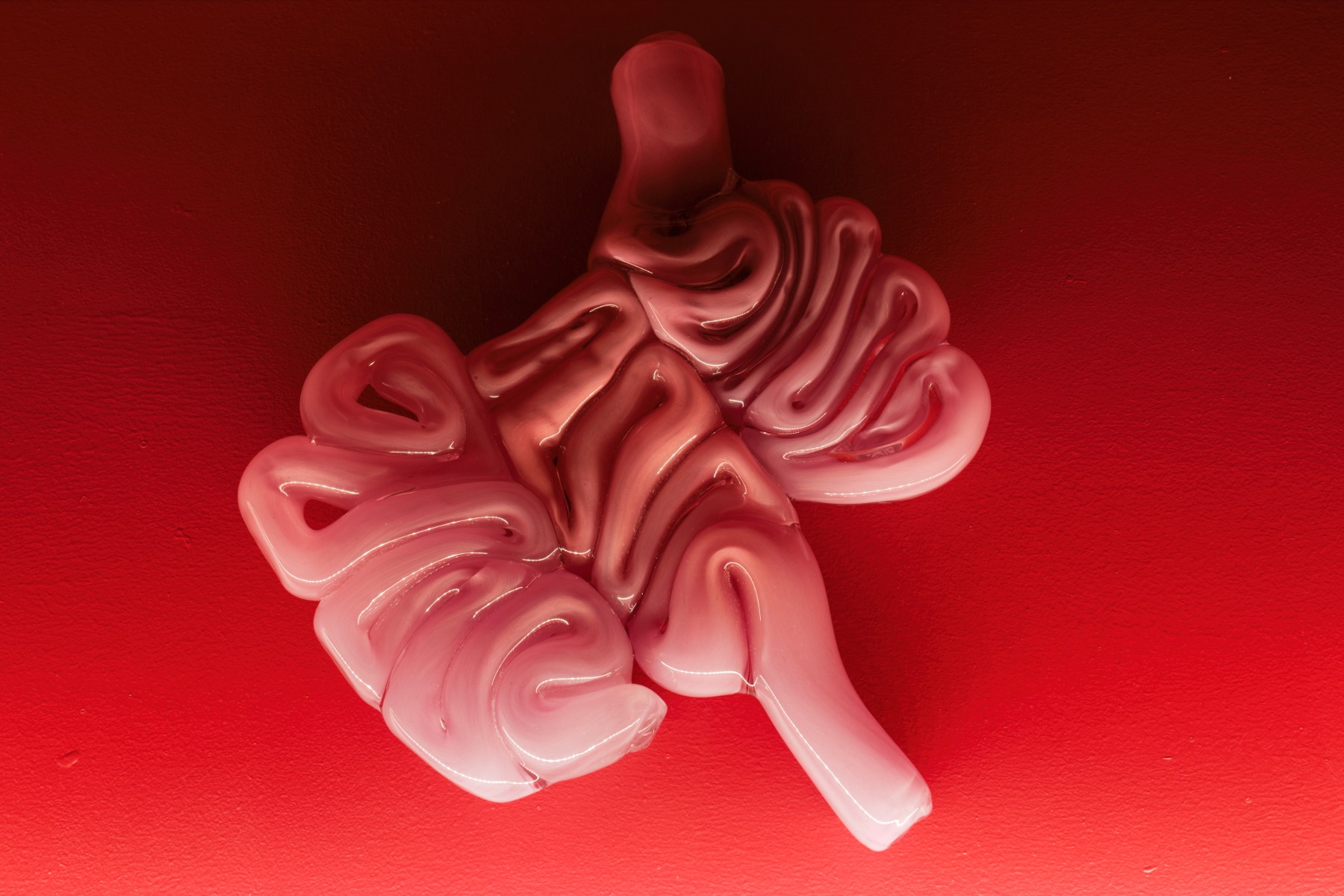
Why do you think it’s important to talk about the events from the time of the factory in today’s context?
Unfortunately, the social aspects of this space are almost forgotten, and remembering them depends on the energy of a few, like Irēna. As often in our society, the loss of memory first affects minorities or marginalized groups: history is ideological, and so is its absence. The space where the exhibition takes place holds an immense memory that I found impossible to ignore and that I believe is meaningful enough to bring to the attention of a wider audience – in this case, through the prism of my work.
Have underrepresented communities been part of your artistic practice before?
In 2018 I was invited by the Kaiser Wilhelm Museum (Krefeld, Germany) to reflect on their vast collection of applied arts with a newly commissioned work. For inspiration, I was presented with three large volumes embracing the collection of the museum. While browsing through thousands of these pages, I came across only one colorful plate of a design by a female artist. I was aware of the disparity between the genders represented within museum collections, but the scale of it still shocked me. If we take a collection as a memory, it is a very biased one. Even though many female designers were part of design movements like the Werkbund or Bauhaus, their work was discredited and demeaned by their male colleagues, who regarded it as kitschy or insufficiently objective.
To respond to these prejudices, a group of women designers conceived a pavilion called Haus der Frau for the 1914 German Werkbund exhibition in Cologne. Only works by women designers were presented – the intention was to introduce the objective female designer. Ironically, Haus der Frau was viewed by critics as a copy of male design, and the creativity of the women designers was again ridiculed. The pavilion was destroyed during the war and there was no mention of it in the historical literature until the late 80s. Up until today there is hardly any evidence of its existence in historical documents. This context served as the starting point for my installation Haus Der F., which playfully tried to annul the boundaries of gender roles and authorship. In the installation I incorporated the floor plans of the original Haus Der Frau, as well as other visual elements, simply to remind people of this historical attempt. At the axis of the installation was a neon object which I created based on the drawing of a paper puppet by Clara Möller-Coburg (the only female designer who’s work was featured in the collection catalogs), in which I turned a helpless marionette arm into a protesting fist.
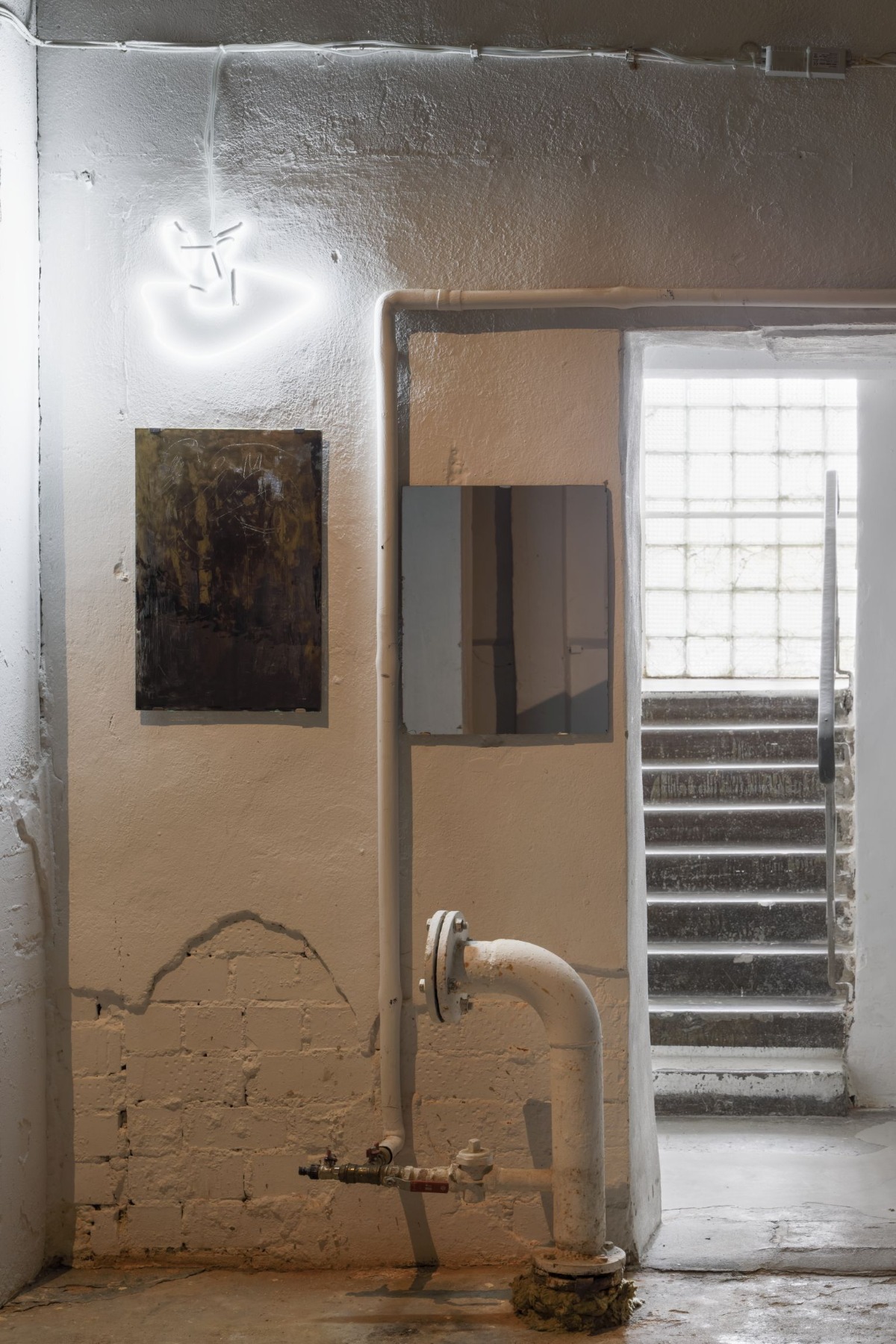
For your installation Rosme*, you not only built site-specific objects but also worked with found objects from the surrounding vicinity; processuality seems to be an important aspect of your work…
My approach to building up a show requires this local sourcing – understanding how people in the area live. Living inside the work, stewing in it for a bit – this process leaves some sort of sediment. I believe this sediment can charge the work with the sense of a performance that has taken place... that lingers. I look for objects that reflect and are relevant to that particular place. Once I have a few of these “anchors” that can articulate the installation or the atmosphere, I add elements that come from my own realm – all the rest usually happens in situ.
In the case of Rosme, I traveled to Cēsis four times – they were a combination of site visits, working with the library, and assembling the installation. Each trip offered up a new layer I could then unfold further, and I continued to work in the studio on the ideas which were developed during these trips – the glass work, the silkscreen, or other details. The total installation usually comes to life only at the very last stage – I arrange and position it all together when the lighting is set.
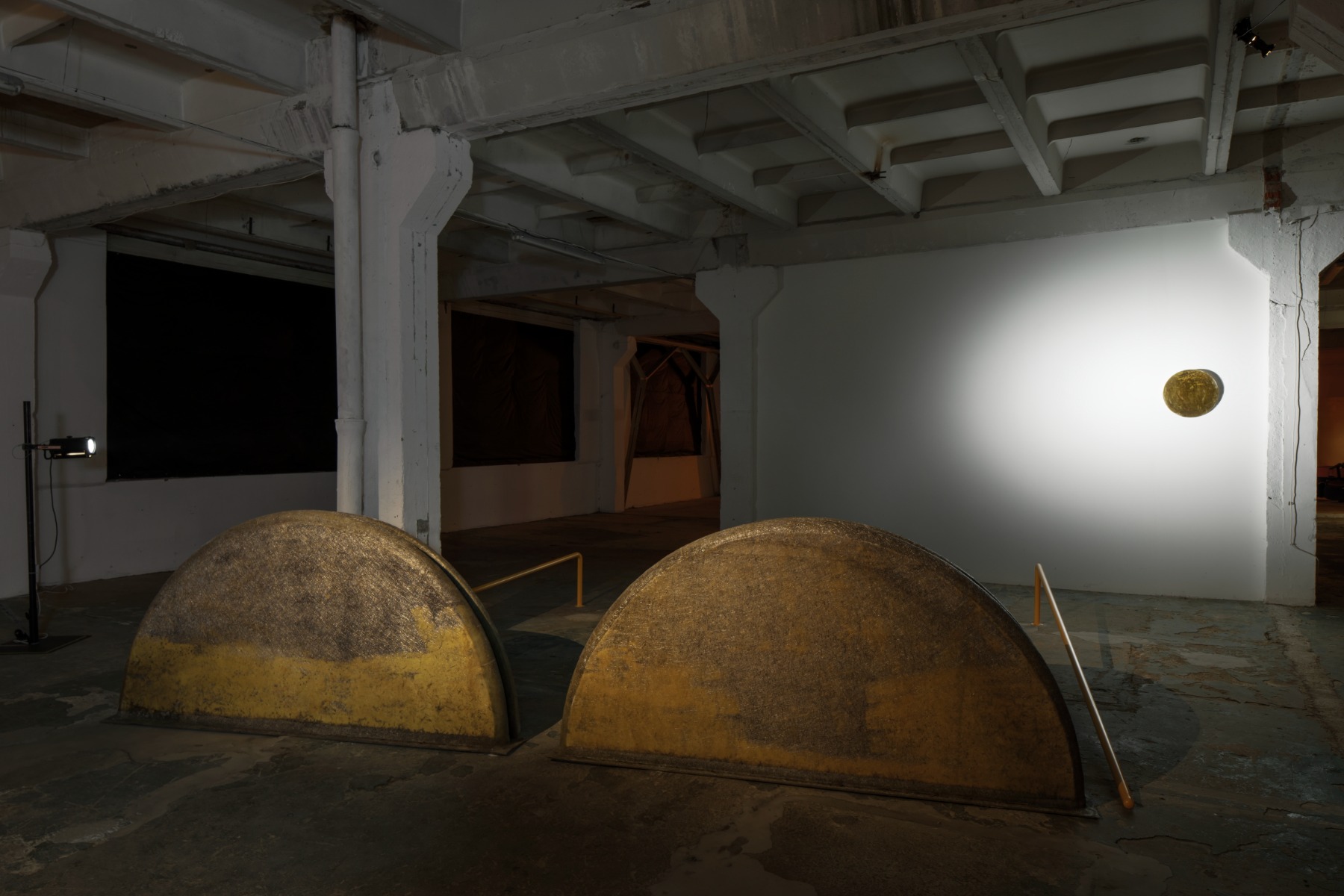

When working in this manner, how does one know that the exhibition is finished? Is it hard for you to know when to stop?
No, not at all. I have quite a clear vision of where I am heading and what sensibility I am aiming for. 3D modeling or mapping out the room does not work for my practice at all, yet I have a very strong sense of how the atmosphere needs to settle in the space and what kind of elements still might be needed. So the process is very intuitive, but I know I can fully rely on it. I stop when I am there.
You also use various techniques, materials and media – such as sculptures, found objects, videos, photography, sound, and slides. For example, one of the objects is a video projected on a fan. How did you arrive at such a broad array of artistic expression – was it intentional or consequential?
The nature of my installation practice foresees a wide variety of techniques. I don’t create specific objects or stories but rather environments, and an environment is composed of many actors – from interior objects and just objects to the color of the wall, the light, dust, smell, sound and so on. I actually graduated from the art academy in 2005 as a video artist. But as time passed, I grew to be very specific about the surroundings in which the video work would be presented and installed, as I found the act of experiencing a video more interesting than the video itself. So my work evolved in a way where the experience of the atmosphere grew more important than its isolated components.

The installation Rosme seems to capture a moment. In your own words, it is like people have left during a long intermission: the props and the scenography suggest a narrative, although you say your work is not narrative-driven.
I am very much interested in an intermission moment that marks a kind of absence that is not ultimate abandonment but rather a temporary displacement. It leaves clues for the viewer to compose their own narrative, and it also gives some hope. My work is not driven by narrative in the sense that I don’t impose a story upon a viewer; instead, I’m interested in creating a suggestive environment that can form associations in the mind of the viewer.
Do you believe that objects and places have a soul?
I would not use the word soul, but I would use the word spirit. I do believe both spaces as well as objects have a spirit, some more present than others, but all do – and I find myself quite sensitive to these as well. So when sourcing materials for the installation, I often turn to materials and objects that have “lived a bit”, especially found objects from the surroundings, and used materials and mirrors, which hold a lot of information and memories...

You consider yourself a Latvian artist, born in Ventspils. However, your work is better known abroad. Do you think that being Latvian and from Latvia somehow affects your artistic practice?
I am proud of my background growing up in Ventspils, but it happened that life brought me abroad. I’ve now lived a greater portion of my life abroad, and that’s also where my artistic practice took shape. But obviously, growing up in the Soviet block in a workers’ family and witnessing major reforms and transformations in the country has influenced my perceptions and sensibilities, and it’s impacted the way I perceive and approach art.
It seems to me that your work also deals with nostalgia, but an underlying humor and/or playfulness is always present as well...
My work obviously deals a lot with the past or the fragility of things, forms and notions. This undoubtedly brings nostalgia with it. Yet I am also interested in absurdity and play/playing as such – theatrical or other forms of tricking – and this probably adds a layer of humor, too.
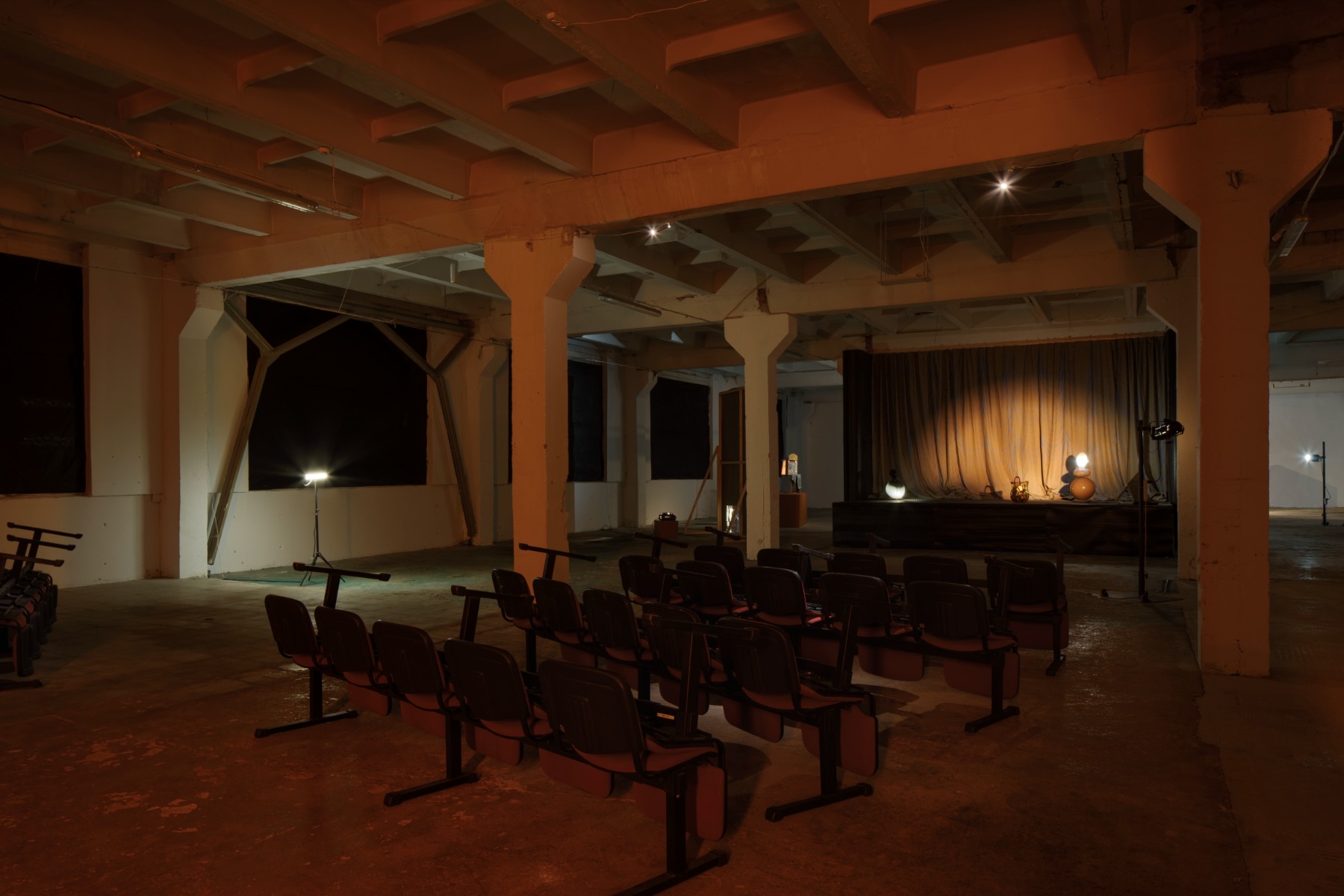

What inspires you on a daily basis?
Conversations, architecture, history, mythology, dreams, the obsolete, everything and everyone that ages.
What are your plans for the future? Are there any particular themes you’re excited to explore in your upcoming work?
I have a puppet theater play based on work by Giulio Camillo brewing.
Can you tell us more?
I have become interested in puppet theaters over the past few years – both as a vanishing form of mobile architecture/culture house as well as a metaphor for the increasingly staged and fully manipulated arena. The work of Giulio Camillo, especially his concept of the “Theater of Memory’’, connects the idea of theater to a unified and sacred spatial mnemonic system. I have been obsessed with the notion of “memory buildings”, so I am very curious to develop this body of work.
Puppet theaters remind me of my childhood – your daughter must have a lot of fun! What is it like being an artist and a mother? From a broader perspective, how is motherhood, in your opinion, perceived in the art world?
Thank you for asking this! This question, unfortunately, keeps failing to make it into the mainstream art world discourse. When it is discussed, it is often as an artistic theme, and not within the context of the very real and practical problems facing artist-parents.
My becoming a mother partially coincided with the pandemic, so the work disparities affecting mother-artists were not yet so visible to me. However, what I continue to notice and experience is a lack of support or understanding from the cultural world concerning the simple needs of a creative parent. The art world is definitely not structured to include mothers. There is a general idea that an artist is a single white man in their thirties or forties who is available 24/7. There’s a failure to imagine that an artist can also be a mother. There are no structures in place for that – the most basic example: the timing of art events, the length and timing of residencies, and travel and accommodation that does not foresee children and so on. Exhibition openings are typically held between 18:00 and 21:00. It’s when networking happens, where you meet curators, gallerists, and other artists. If you’re cut off from early evening events, you become isolated.
I had two solo exhibitions in the first year when my daughter was born, one when she was three months old, the other when she was six months. It was extremely demanding – I would not do it again, to be clear. Yet I was not even a single mum. I had some financial stability at the time and both myself and my child were healthy, so clearly, my case was not the most complex one by far.
In the Netherlands, my partner and I run an art space focused on artistic publishing (Page Not Found). This year we invited the art critic Hettie Judah to present her book “How Not to Exclude Artist Mothers (and Other Parents)”. In it Judah details the difficulties experienced by artist parents and suggests specific solutions for how to move forward. Together with some artist parents, Hettie has also composed the open manifesto How Not to Exclude Artist Parents (Some Guidelines for Institutions and Residencies). The word “artist” can be understood here as a creative worker, I would say. I can imagine that for curators, critics, writers and other people working in the field, this issue is just as valid. I believe more art institutions and cultural organizations should self-reflect and open up to this issue.
I recently found this very meaningful thought by artist Camille Henrot in her book “Milkyways”: “My hope is that one day, motherhood will no longer refer to a fixed identity determined by gender, health, and reproductive and economic ability to care, but rather to a way of moving through the world. Mother, newly defined, is someone who stands by, stands close and certainly stands against.”
* “Rosme” (Activity) is also the name of the socio-political and literary-artistic monthly magazine of the Latvian Society of the Blind
Title image: Ola Vasiljeva. Photo: Tanya Abramova